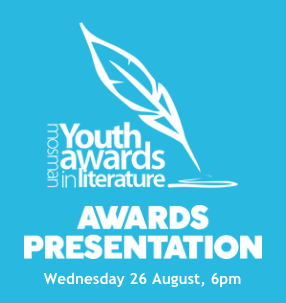
Every month I donate time to helping others further behind me in their writing journeys.
Most recently this has involved judging the Mosman Youth Awards in Literature, for which I not only read the entries and selected the winners, but also offered a detailed judge’s report.
This year the award ceremony was via a live Instagram feed!
I’ve summarised past reports here and here, because the writing tips can apply to other writers as well. This year’s report follows for the same reason!
1. Write for Your Reader
Writing for your reader is different to other forms of writing. Whether you’re writing at work or school, there are often various keywords you are asked to use, along with certain techniques and structure that order the information you provide. For example, report-writing is highly structured; journalism has a defined style; and when writing for the English HSC, students need to score marks with adjective use, use of literary techniques, structuring for orientations and use of anecdote.
However, when you’re writing for a reader, keywords and techniques don’t matter. A story told without any of these could be the best story I’ve ever read. More important is enabling the reader to connect with your characters, and effectively communicating what happens to them and where. Your words can be as fancy as you like, but without these essential elements, readers will simply lose interest. Imagine you are the character(s) in your story and share their journey with readers breath-by-breath – keywords and structure aside.
2. Suspension of Disbelief
Also pivotal in keeping readers’ attention is suspension of disbelief. For example, generally speaking:
- Newborn babies cannot speak (unless you’re writing speculative fiction!).
- Fingernails cannot cause impressions in wood laminate.
- Recently arrived non-English speaking immigrants are unlikely to speak with perfect colloquial dialogue.
Be creative, but also check over your story with common sense before sending it into the world.

3. Revelation Space
While paragraphs of description can enchant and backstory can enlighten (and score high marks at school), a story that spends half its length (or more!) on description and flashback leaves little space for anything other than a revelation in the plot. This risks disappointing those who want something more to happen. Revelation is an extremely worthy subject matter for story, but always remember: your story is being judged against stories that do more. The revelation has to be good if it’s to carry the whole story.
4. Experimentation
Literary techniques offer writers scope to emphasise important parts of their narrative. Brave and experimental language combinations can be exciting and beautiful. However, it also comes with risk. For example, a ‘calm racket of energetic monkeys’ is a great oxymoron if you intend to use one; otherwise the contradiction only generates confusion.
5. Retellings
Retellings can be creative and fun, as well as insightful. I recently edited an anthology of fairytales retold with an Australian twist, and it was fabulous! However, writers have to offer readers something fresh if they retell a story. For example, retelling an historic event exactly as it happened, even with wonderful writing, cannot compete with (also) wonderfully written retellings with more original storylines. Be creative!

Good luck with your next writing project everyone! I hope these tips help!
And congratulations to the very worthy shortlisted entrants and winners of the Mosman Youth Awards in Literature!
If you’d like more help with your writing, watch this space – as I’ll soon be launching a whole gallery of on-demand writing courses for your writing development delight!





